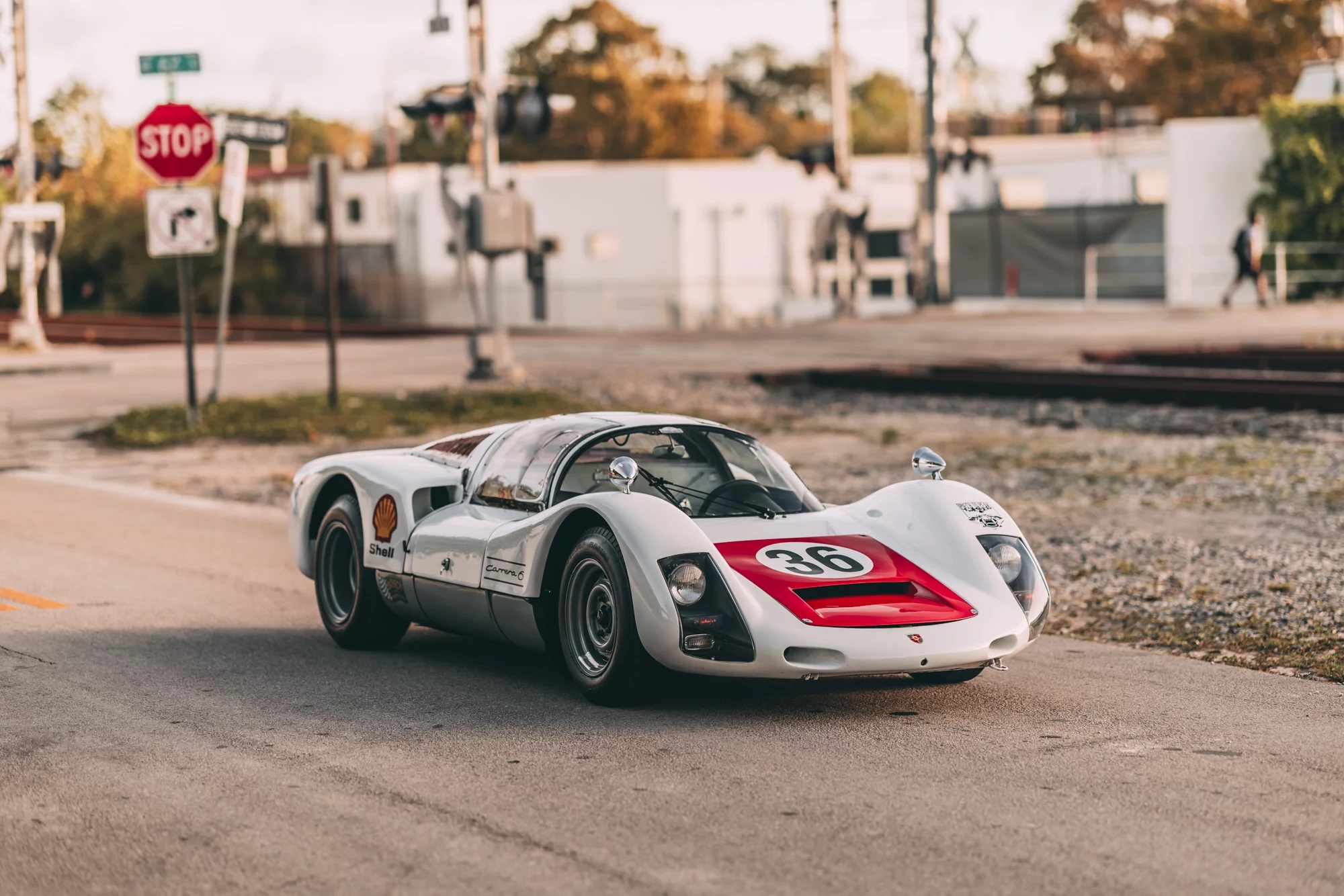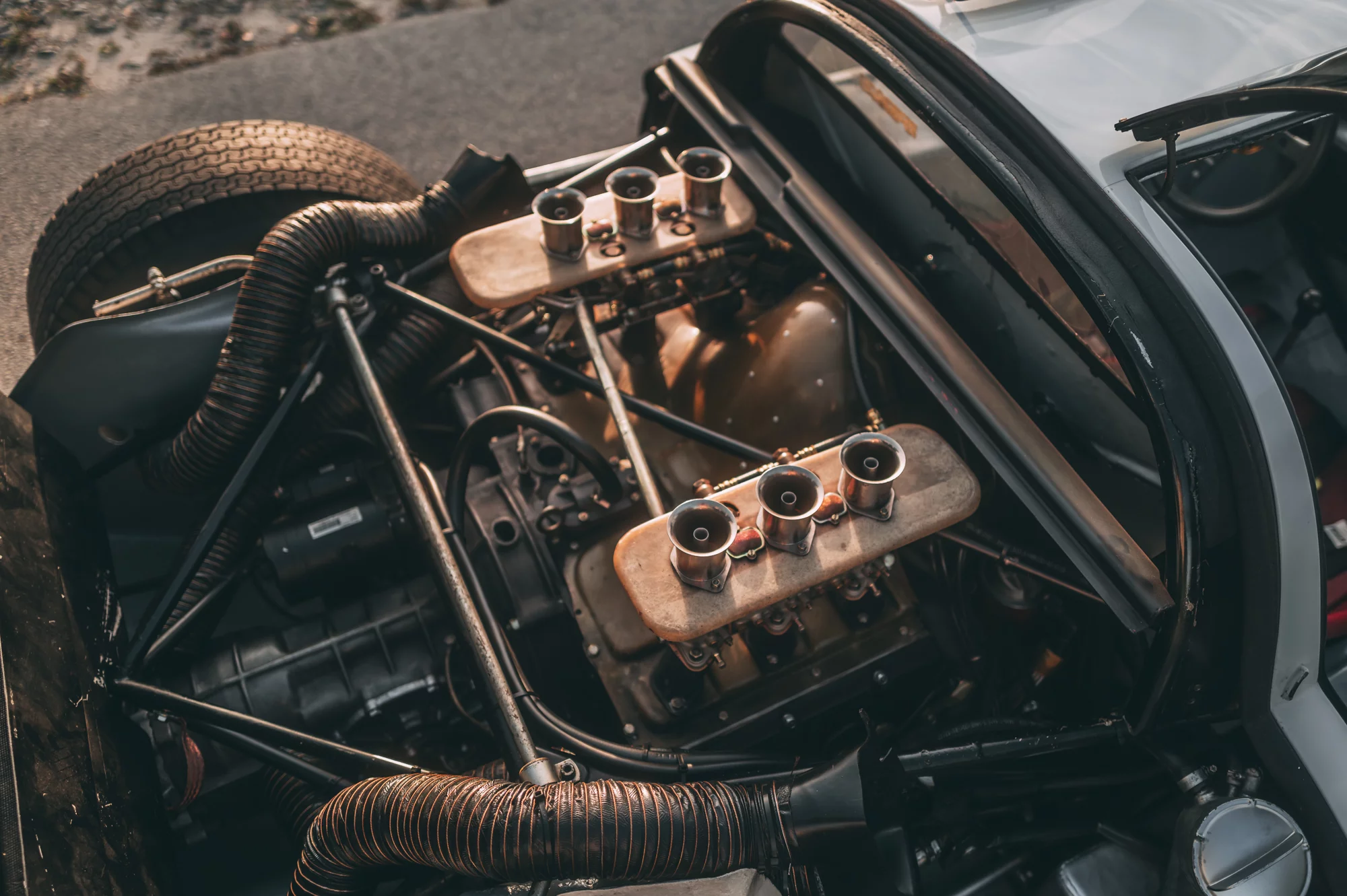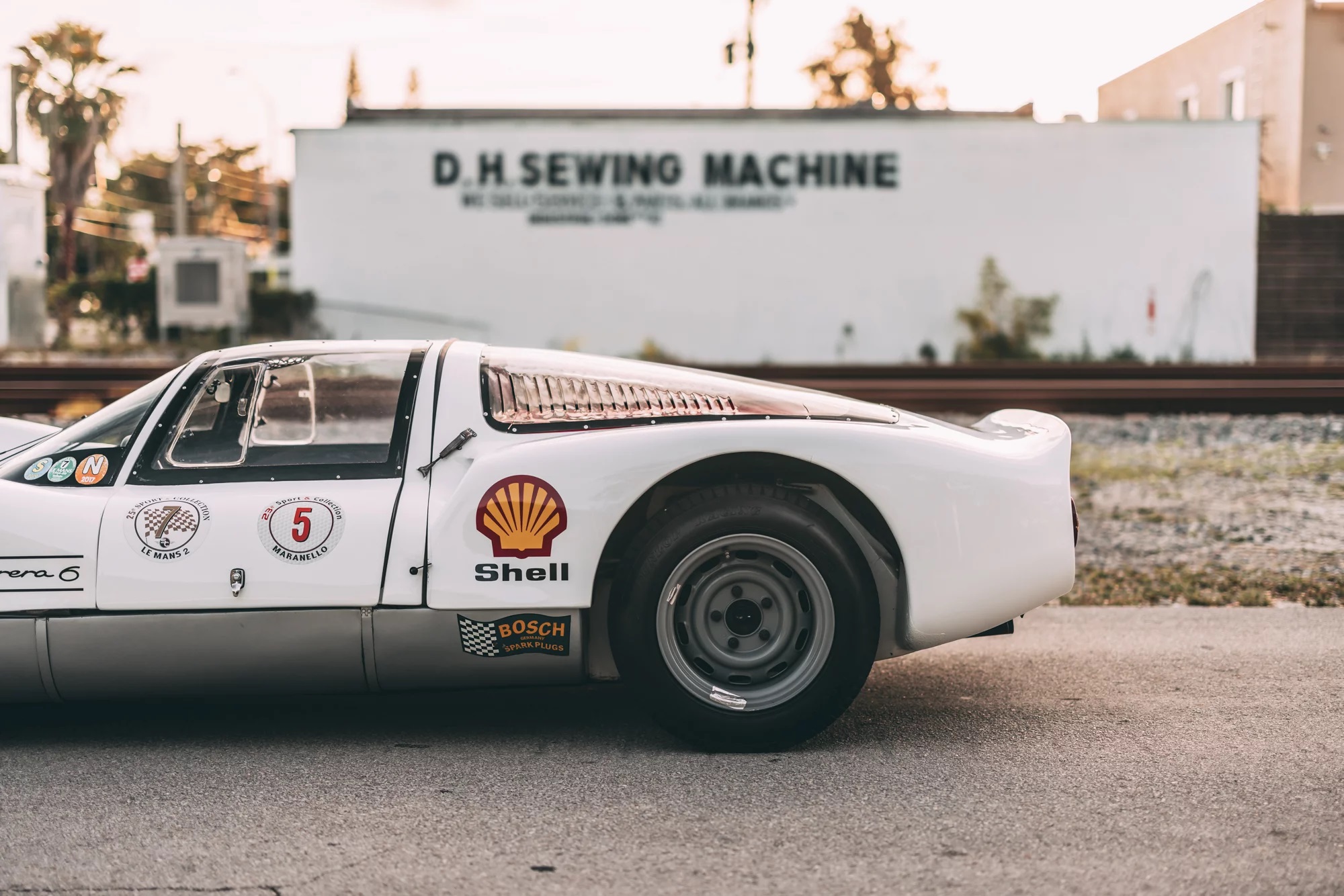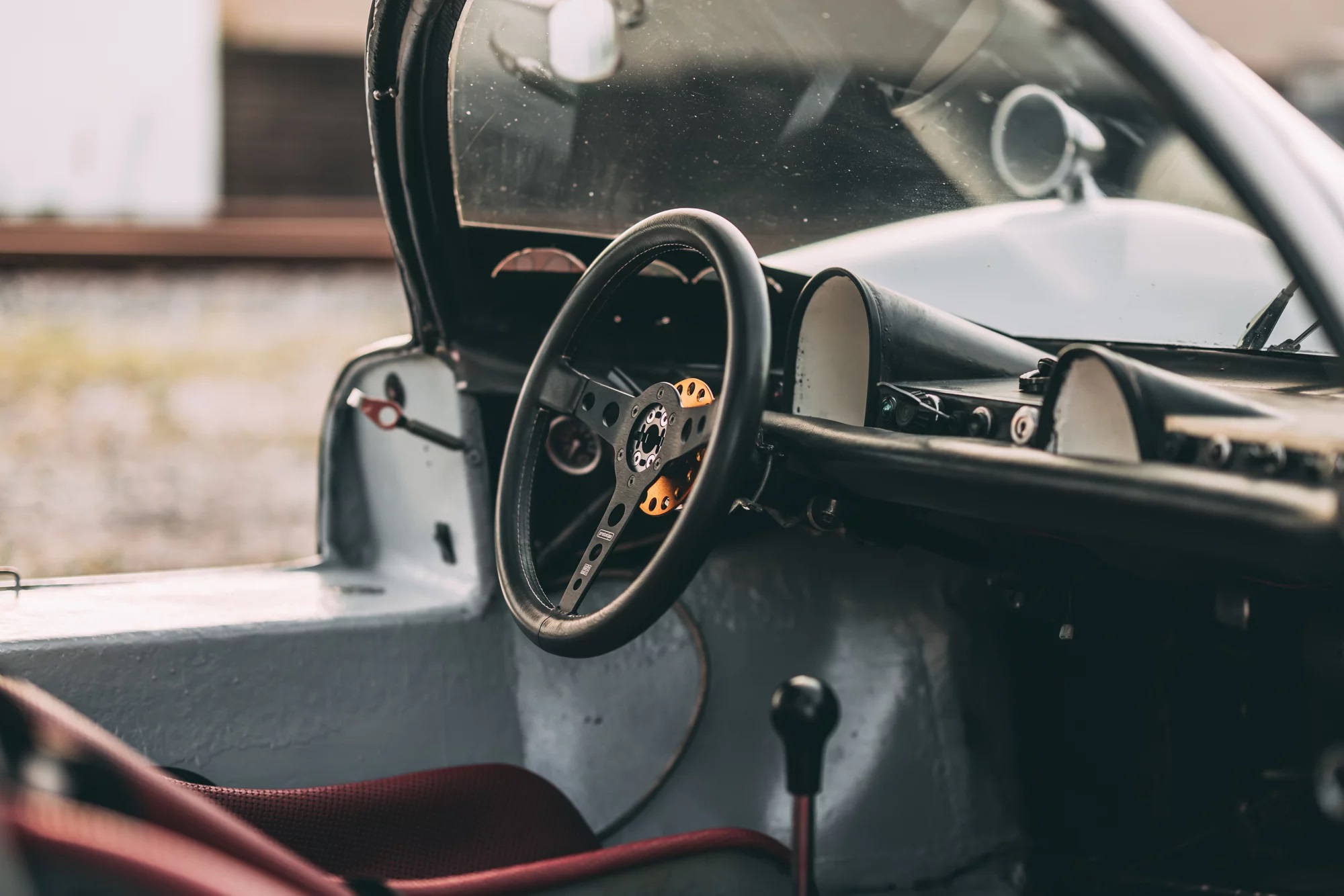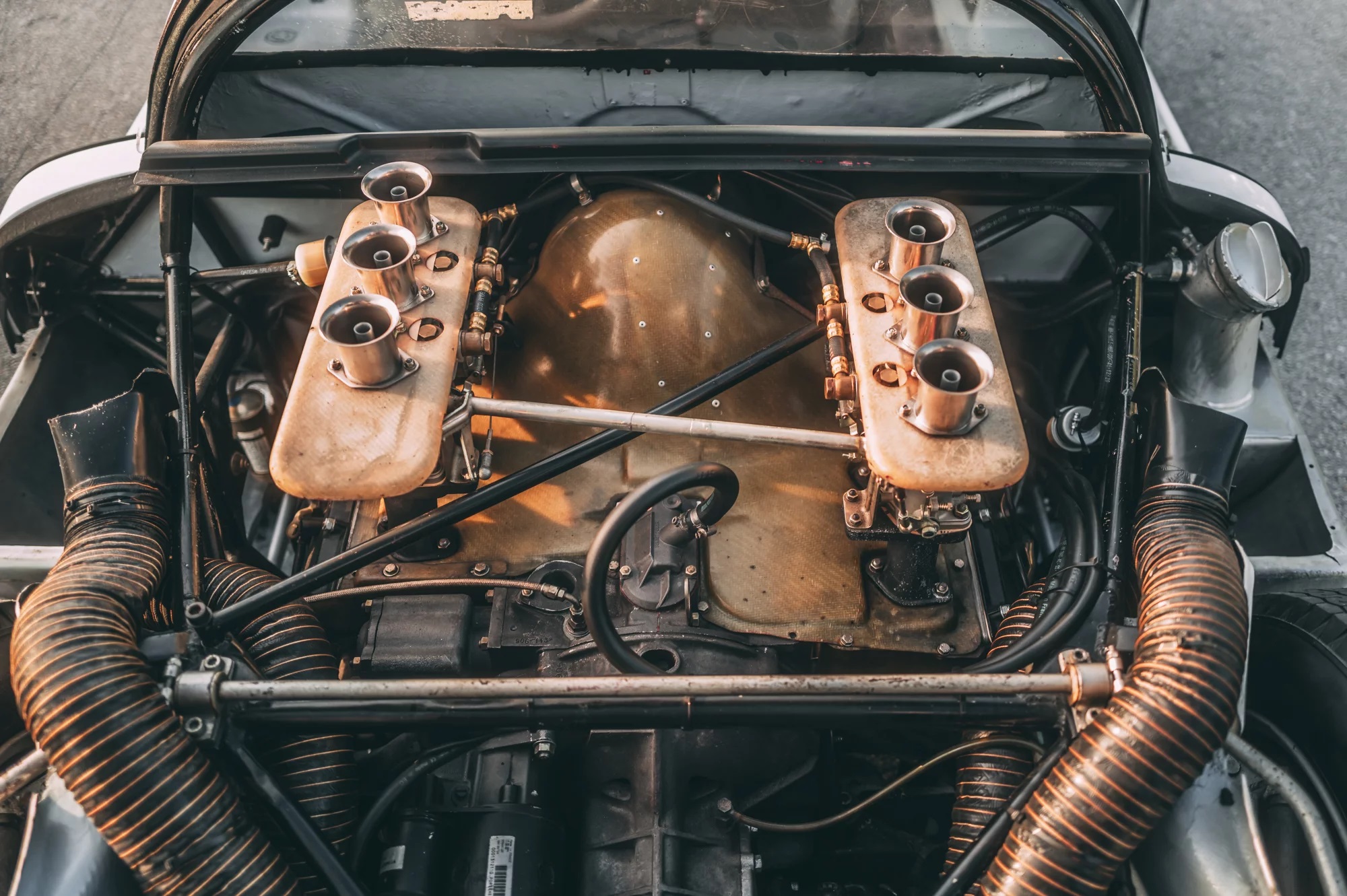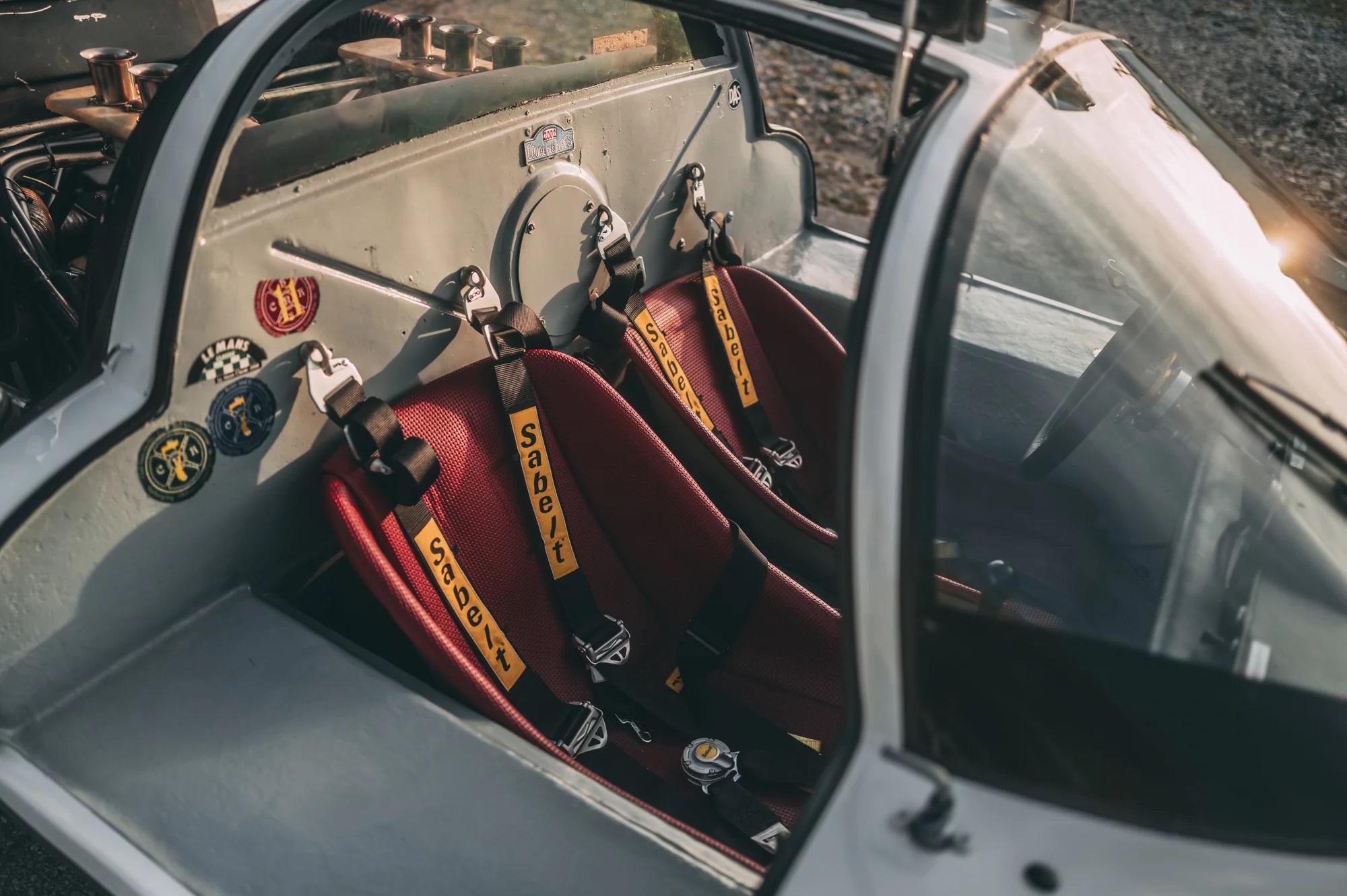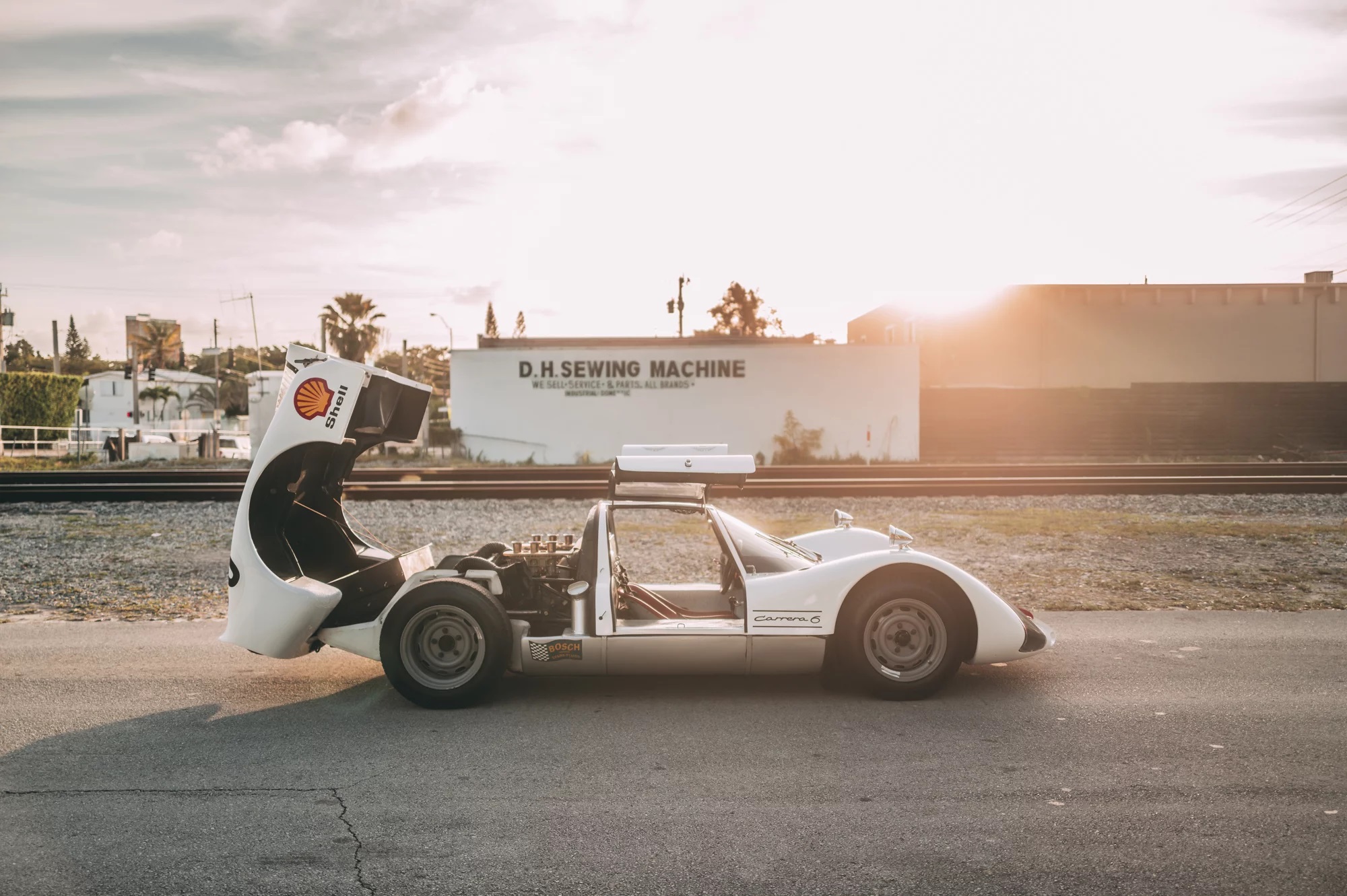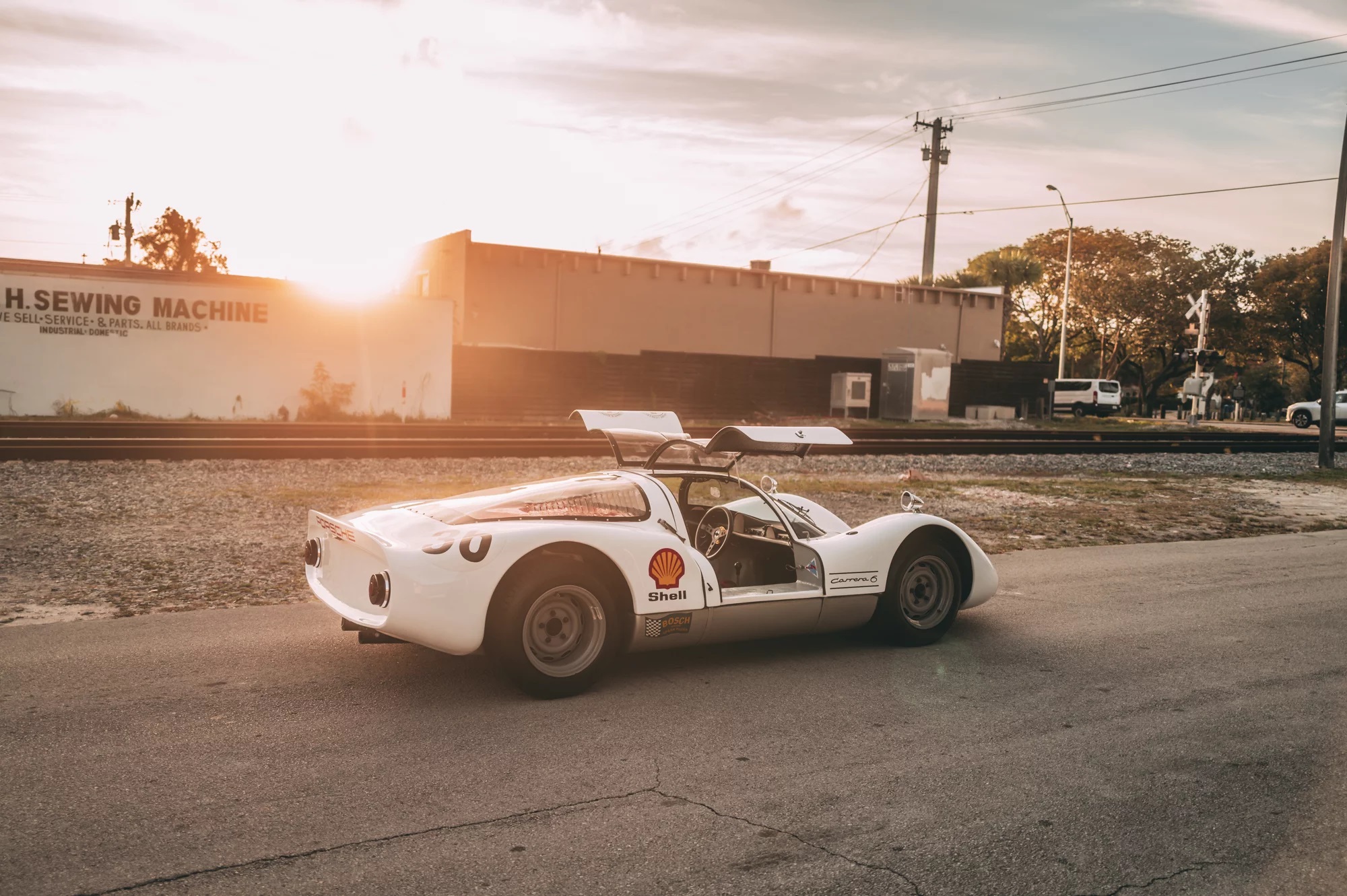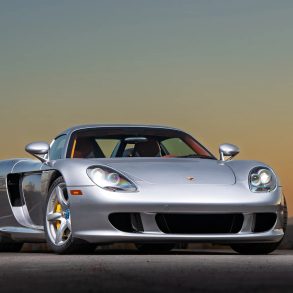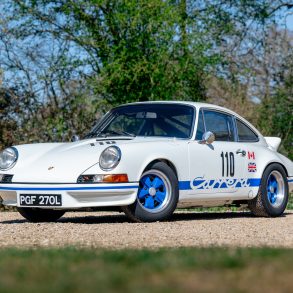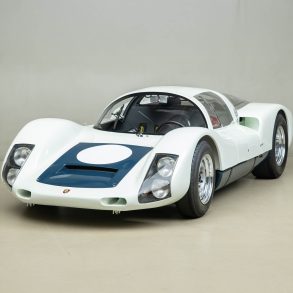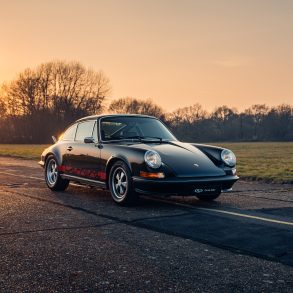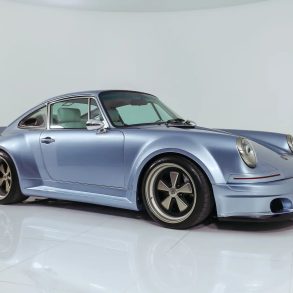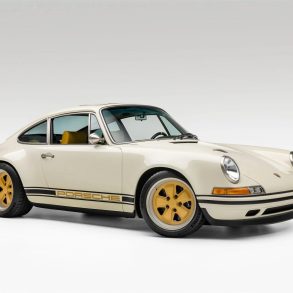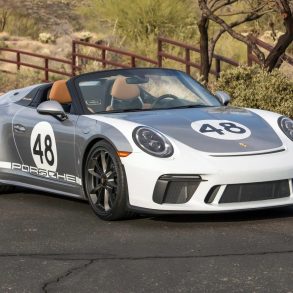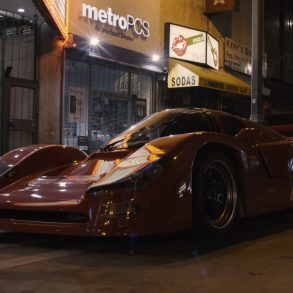Developed for endurance sports car racing, the 906 was a street-legal racing car that raced in the FIA’s Group 4 class against cars like the Ferrari Dino 206 P. On the basis of the “Ollon Villars Bergspyder”, Porsche developed the type 906 Carrera, which was soon only referred to as Carrera 6.
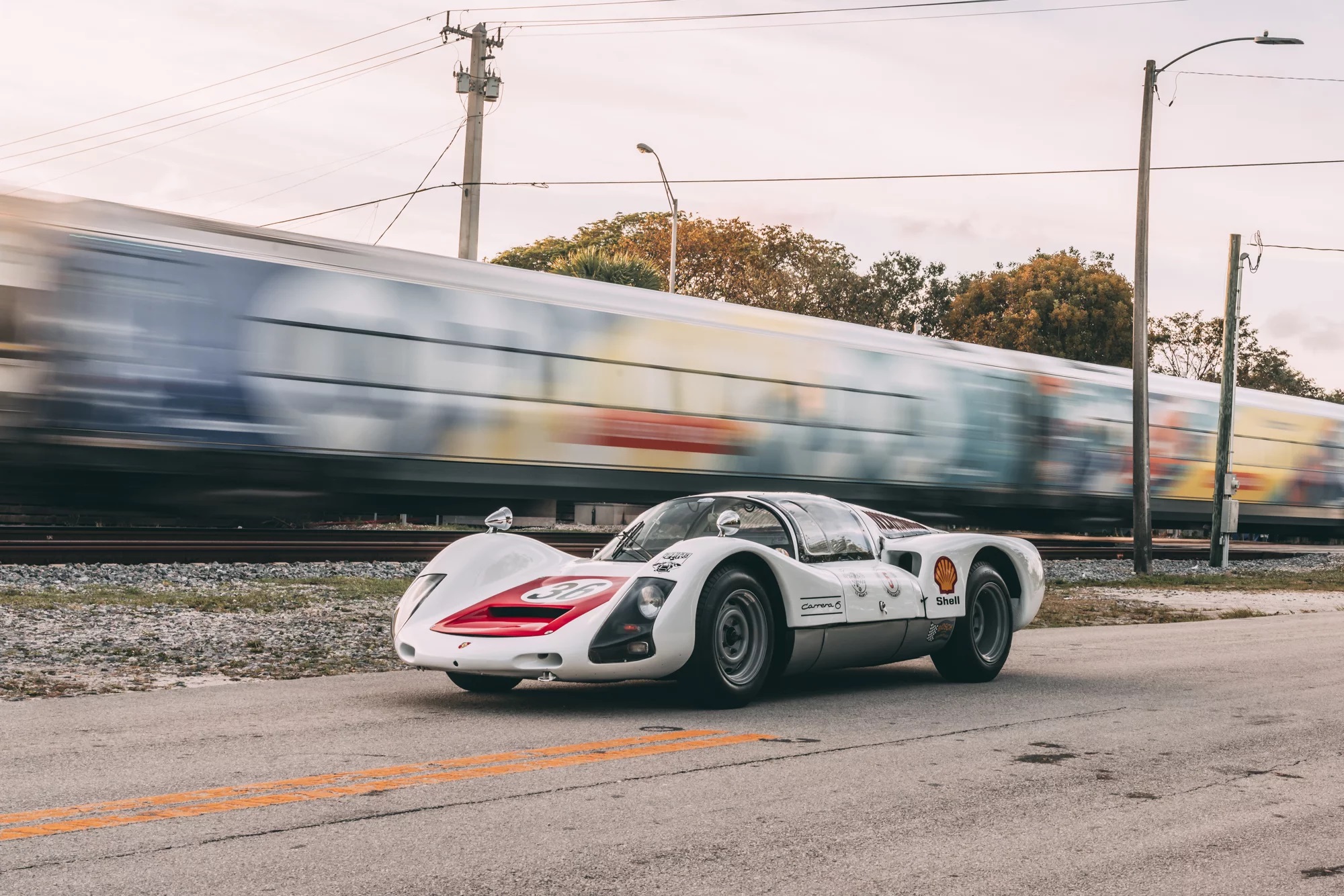
The six-cylinder naturally aspirated engine, the wheel suspension with coil springs, the wishbones and stabilizers mounted in metal instead of rubber to improve driving behavior, and the brakes were adopted from the 904/6. The Group 4 racing car had a sturdy tubular steel grid frame, some of which served as an oil line.
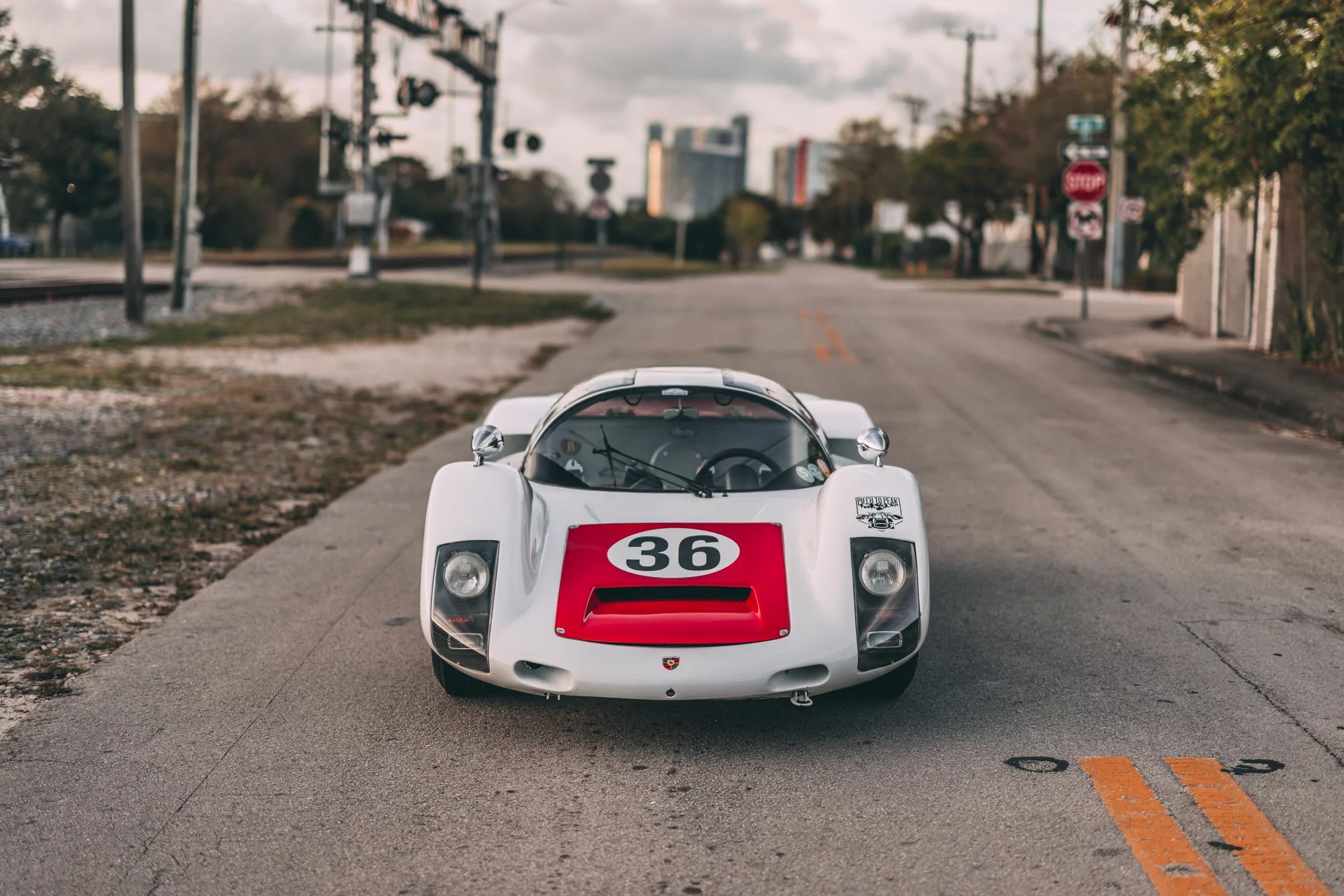
Based off the same principles as the 904, the 906 used a boxed steel chassis with a fiberglass body that added rigidity to the design. This particular monocoque construction was very light and resulted in a car which typically weighed 1,300 lbs (580 kgs).
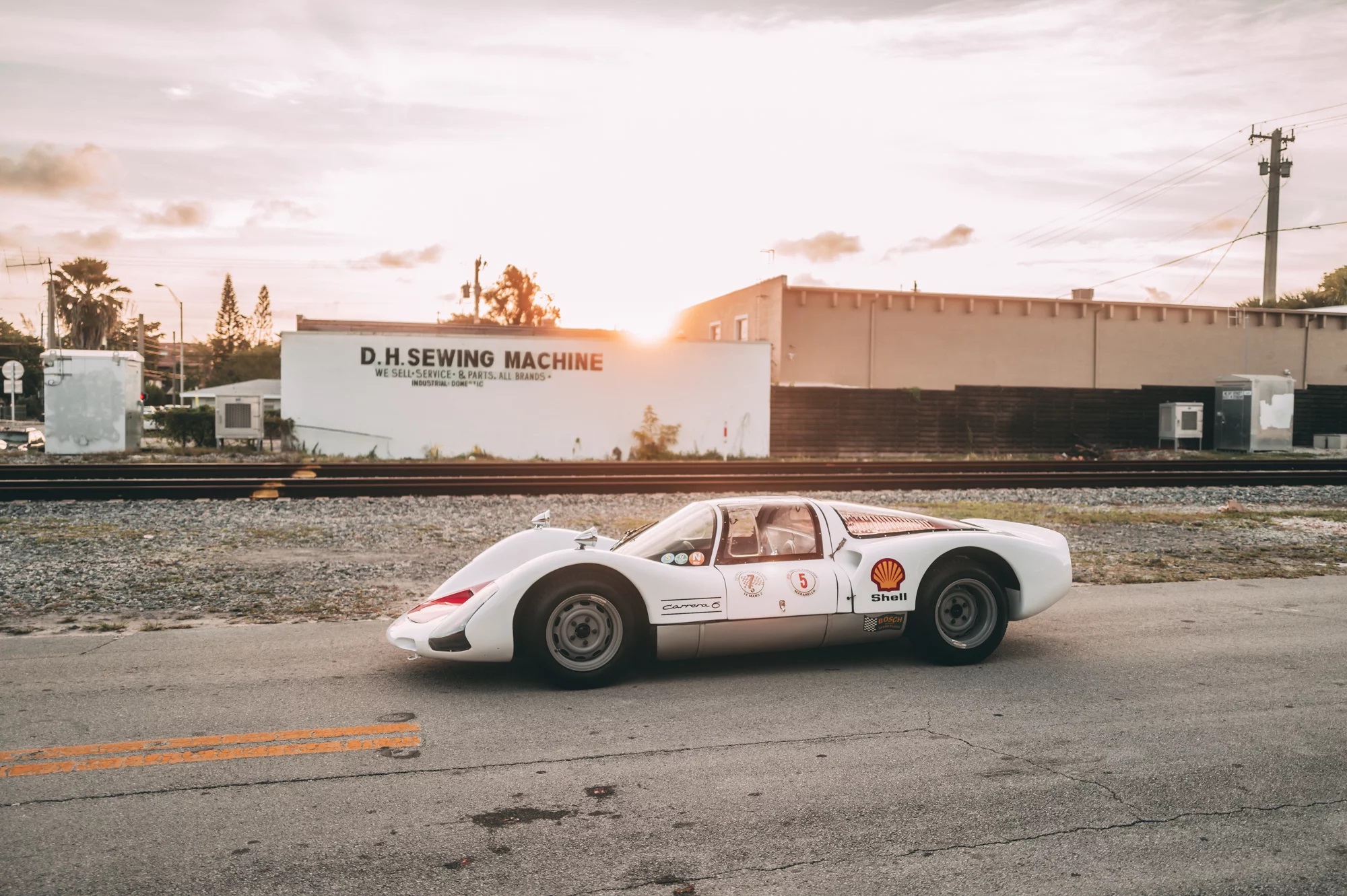
The Carrera 6, with its flat plastic body, barely a meter high, with gull-wing doors and the typical engine cover made of yellowish Plexiglas, produced 52 “standard” units, nine chassis with the 6-cylinder injection engine and four with the 2.2-liter 8 Cylinders that started out as prototypes.
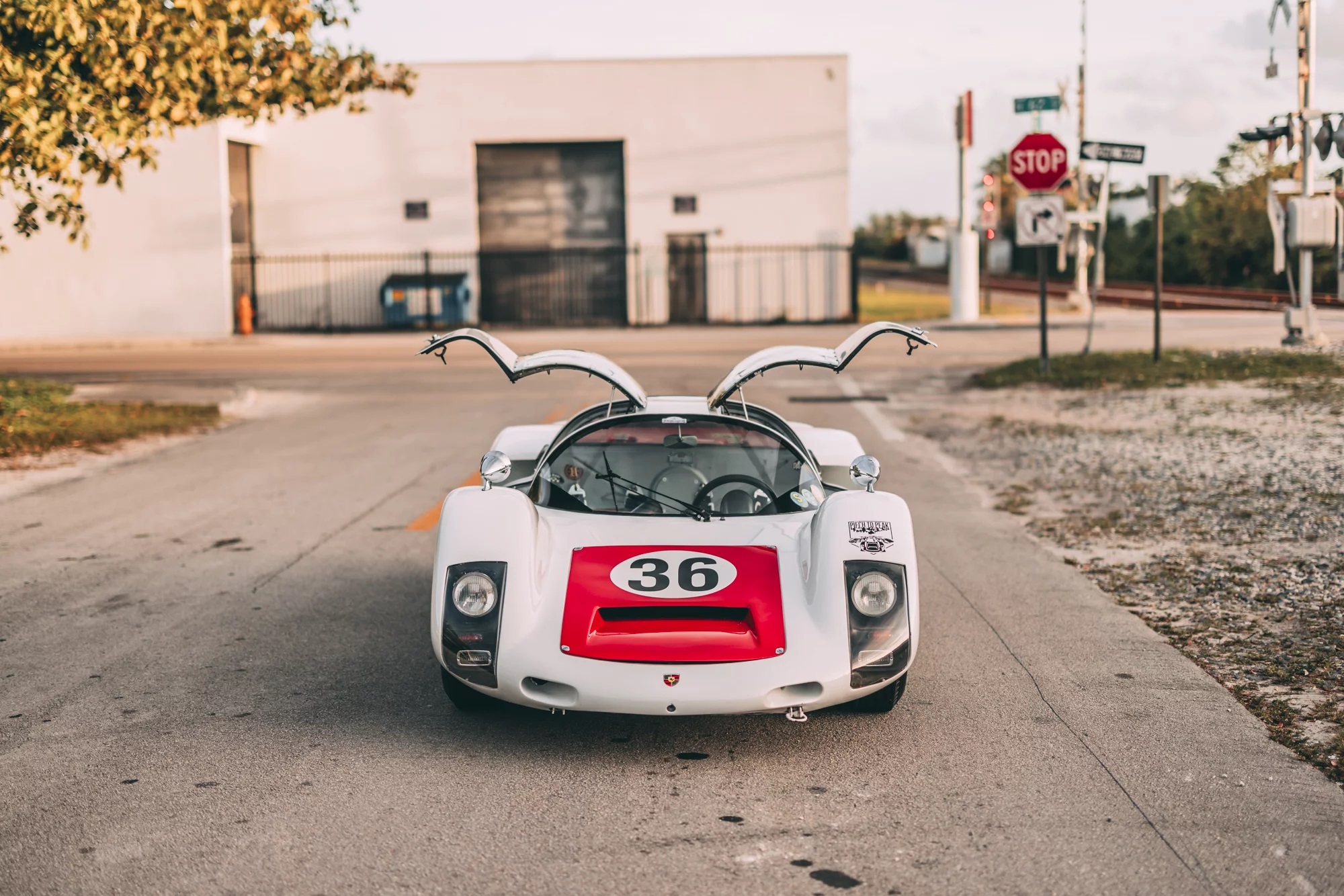
The greatest success of the Porsche Carrera 6 “Standard” was undoubtedly the victory at the Targa Florio 1966. For Le Mans, three Carrera 6s were provided with a special long tail that lengthened the body by a good meter to the rear. They took the first three places in their class.
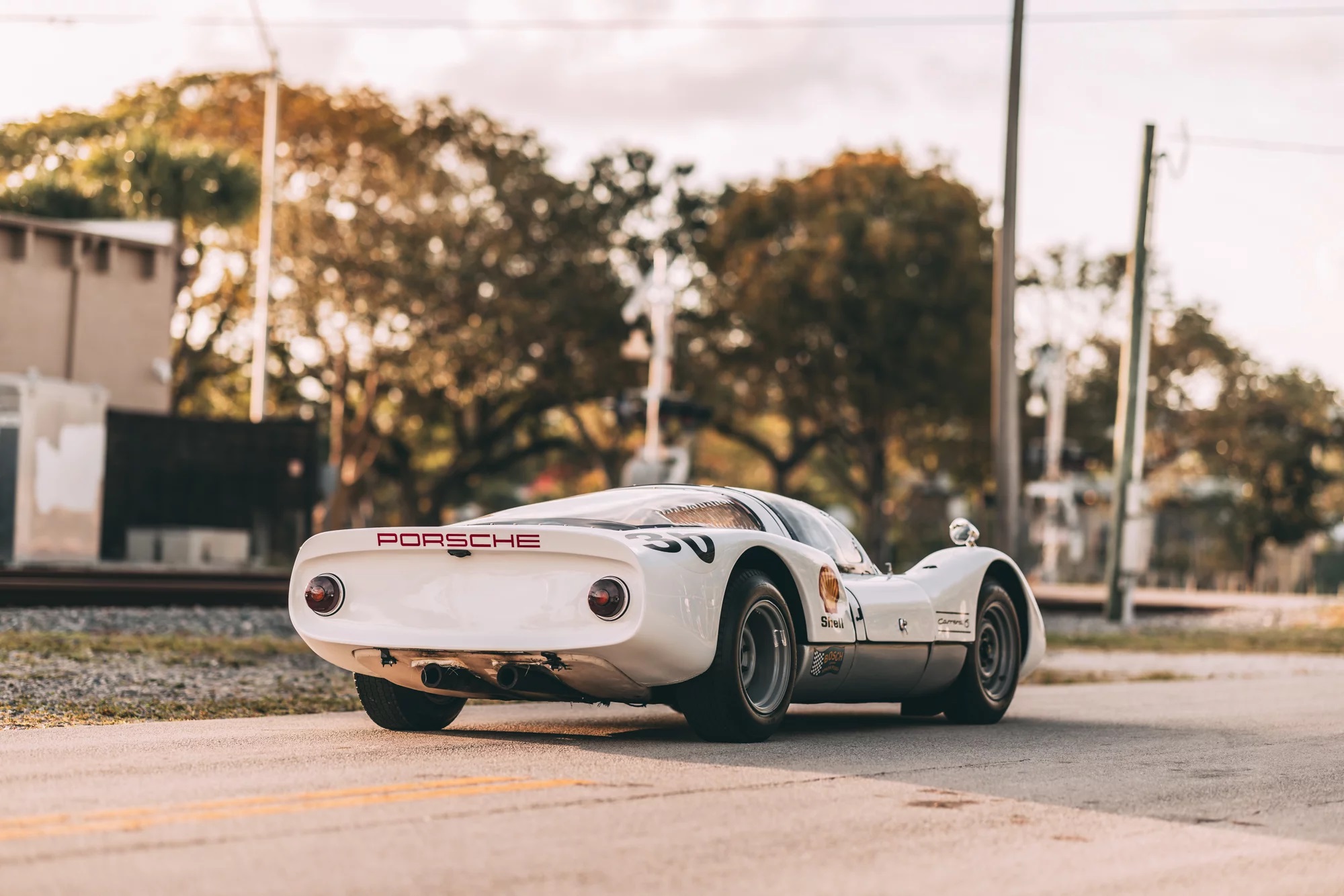
Schaltkulisse is proud to offer a well preserved example of a 1966 Porsche 906 Carrera 6 with a successful Italian period racing history.
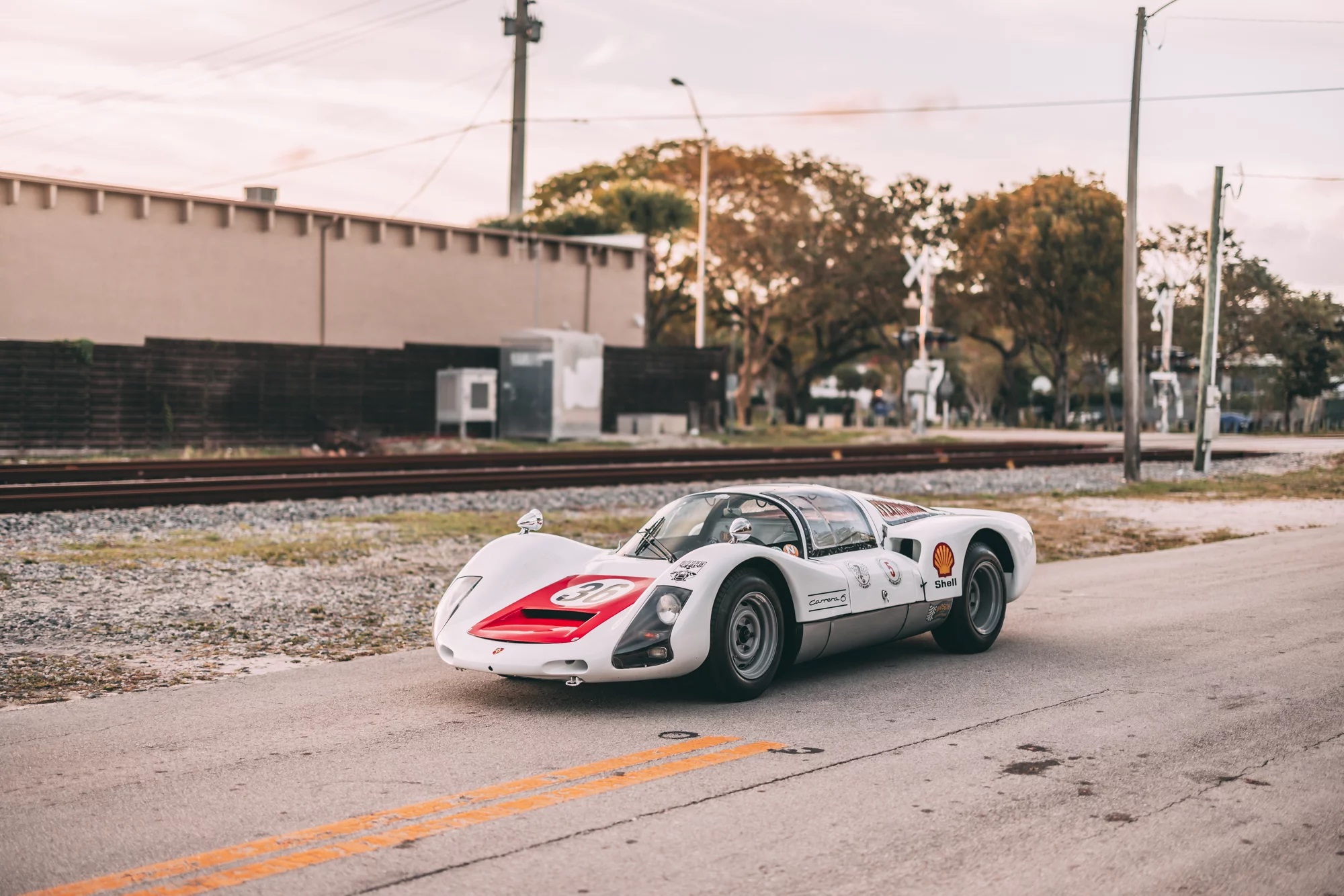
Chassis 906-115, first owned by Ermanno Spazzapan, had a remarkable racing journey across major Italian Hillclimb events, securing numerous victories and accolades under various drivers, including Antonio Zadra. Passing through the hands of devoted collectors and enthusiasts, 906-115 continued its legacy, competing in historic races across renowned circuits.
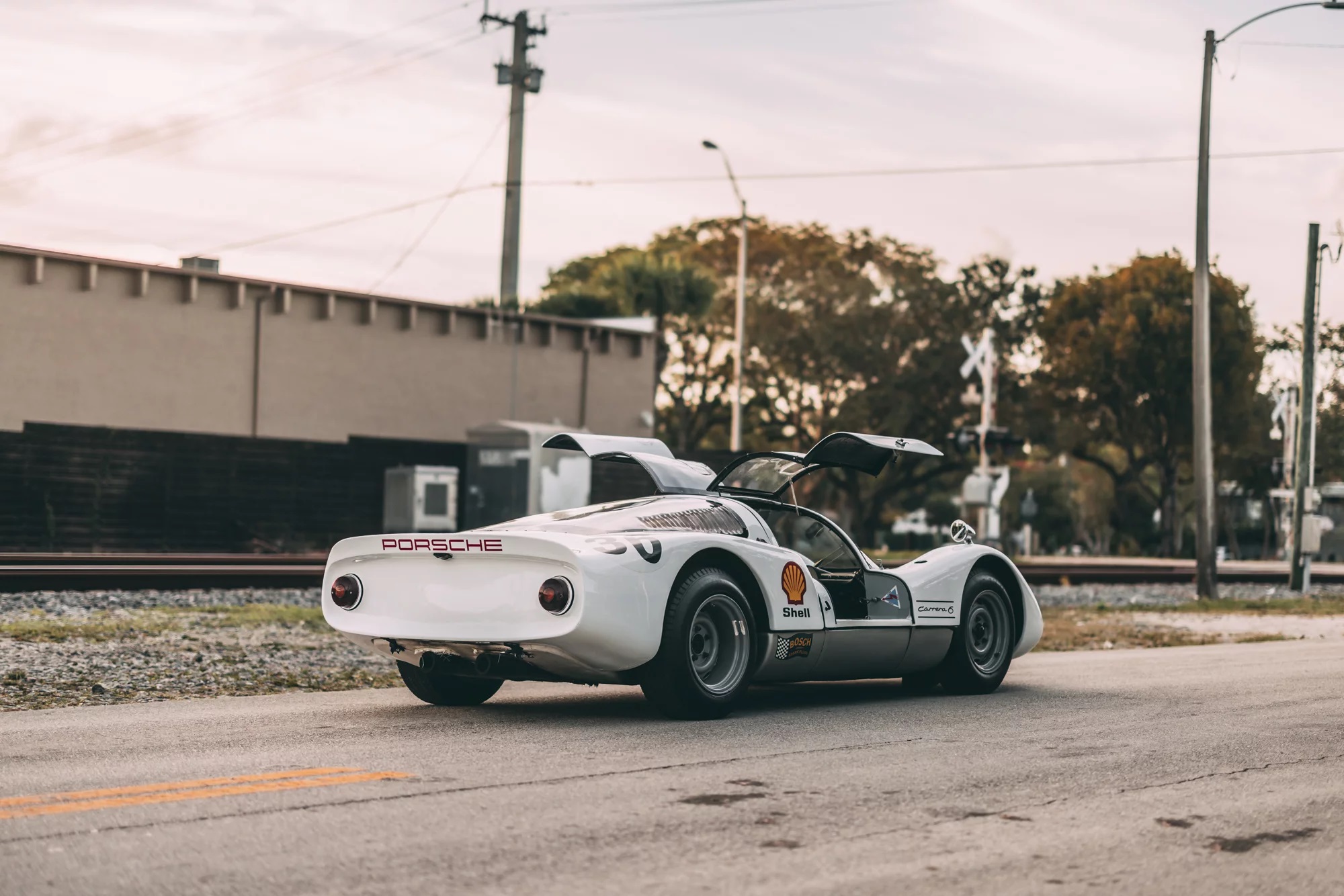
Its rich history is meticulously chronicled in the “Porsche 906” book by Ulrich Trispel and Jurgen Barth. Acquired by French collector Daniel Vercamer in 2007, it remained active in European driving events until 2014 before transitioning to a prominent collection of Ferraris and prestigious Porsches in 2020, preserving its illustrious heritage for generations to come.
Source: Schaltkulisse


